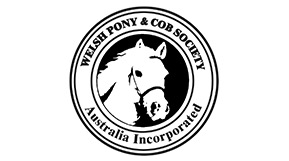Combined Driving
A tribute to HRH Prince Phillip
Patron of the Australian Carriage Driving Society
Harnessing for the beginner and much more
Combined Driving is carriage driving’s answer to eventing. It is comprised of three sections: dressage, the marathon (including roads and tracks and obstacles (in lieu of jumps!)) and cones (the equivalent of showjumping). It can take place over 1, 2 or 3 days and can be outdoors or indoors.
Competition A
Driven Dressage, is similar to ridden dressage, with specific movements performed in an arena (100m x 40m).
Tests require the driver to display control through voice, whip and reins, and the horses must display obedience, impulsion and correct paces..
Competition B
The Marathon is considered the most exciting phase of the overall competition.
The modern marathon has developed into 3 phases. Section A is usually over pretty roads and tracks surrounding the venues and is usually about 5 -7 kms in length and competitors have to complete this section within a certain time, neither too fast nor too slow.
Then there is the Transfer Section which is between 800 metres and 1 km. Once more this section is timed but the time allowed is usually so that most competitors can complete this section at Walk with maybe a little trot.
Then we have a 10-minute rest and vet check. This ensures the horse is suitable to move forward to the fun stuff- SECTION B – THE OBSTACLES.
Section B may be up to 8 man-made or natural obstacles (including water) which are lettered from A-F, they must be driven alphabetically but the driver will find their own route to do them. The time taken through the obstacles is timed and converted to penalties. And once again the time taken to complete the whole of Section B is also timed, not too fast and not too slow!
Competitors or their grooms will be checking the stop watch, working out the times and making sure the correct routes have been taken. Hearts will be pumping, and the adrenaline will be flowing.
Competition C
Cone Driving The Cone Driving is designed to test the fitness, obedience and suppleness of the horse or pony after the rigours of the Marathon along with the skill of the driver.
A course is laid out (rather like a show jumping course) with pairs of cones in place of the jumps. The cones are set just wider than the width of the carriage wheels and each cone has a ball on top. Competitors must manoeuvre between each pair of cones without knocking a ball down. The course is also timed so there is no time to lose. Penalties are awarded for balls down and finishing slower than the time allowed for each class.
After completion of all phases the penalties are totalled and the winner is the competitor with the lowest score.
Of course, there are different classes for less experienced competitors (Novice) and for the experienced (Intermediate and Open). The sport also caters for the smallest combinations(Very Small Equines) to big equines, with separate classes. There are also different combinations: singles, pairs, tandems and teams.
Refer to the Members Resources for the rules, TPR and Organisation Manuals and grading lists, Select Combined Driving Events CDE for more specific info.









